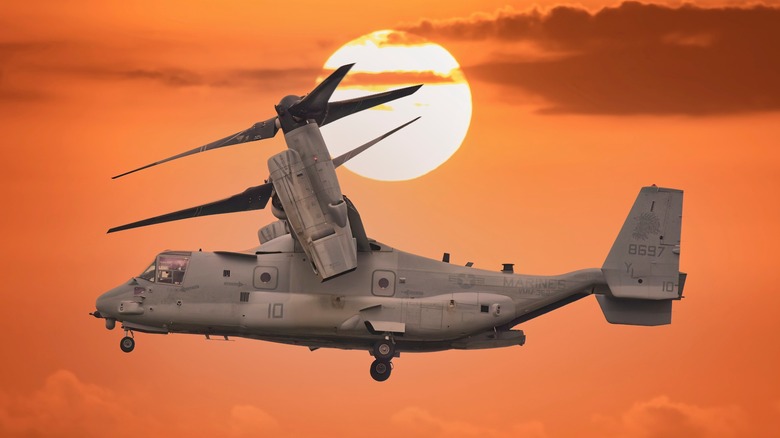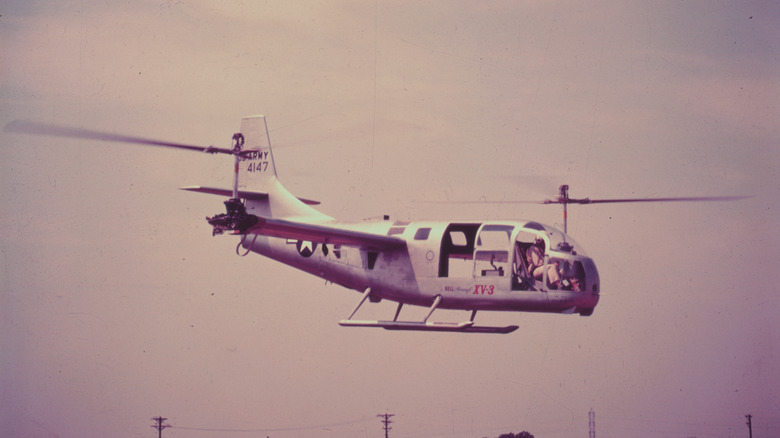Is The CV-22 Osprey Considered A Helicopter Or A Plane? Here's What To Know
It takes off like a helicopter and flies like a plane, so it's no surprise people aren't sure what to call the CV-22 Osprey. It doesn't fit neatly into a single category, and even those who know aircraft can't always agree on what it is. In fact, it can be tricky to say whether it's strictly one or the other. The CV-22 Osprey can technically be considered both a helicopter and a plane. It's a tiltrotor aircraft, meaning it can lift off vertically like a helicopter, then shift into forward flight like a turboprop plane.
That unique design gives it the best of both worlds, which means it's perfect for missions where flexibility and speed matter most. The Osprey can also travel farther and faster than traditional helicopters, making it ideal for getting in and out of remote or hostile areas. Because it can take off and land without a runway but still cruise efficiently over long distances, it handles jobs that would normally take two different aircraft to pull off.
The Osprey is rugged enough for tough conditions and can carry out missions well beyond the limits of typical rotorcraft. Built with special operations in mind, the CV-22 is designed to meet demanding real-world challenges with speed, reach, and versatility.
Bell Helicopter developed several tiltrotor aircraft before the CV-22 Osprey was introduced
Before the CV-22 Osprey was flying missions, the Bell XV-3 was in the air, proving that a tiltrotor could actually work. This experimental aircraft switched from vertical takeoff like a helicopter to forward flight like a plane, then back again, something that no other aircraft had done before. Though the XV-3 was just a prototype, those test flights showed the concept had real potential.
In the years after the XV-3, Bell kept experimenting with vertical lift and tiltrotor concepts, trying out new designs to improve speed, range, and overall performance. These efforts included aircraft like the X-14, X-22, and V-280 Valor, which were developed alongside military and government partners. These experimental designs became the foundation for modern high-speed vertical takeoff and landing research, and ultimately led to aircraft like the CV-22 Osprey.
Today's CV-22 is a game changer for aerial operations and is actually the Air Force's version of the Marines' MV-22 Osprey, specially adapted for long-range special ops missions. Built by Bell and Boeing, the CV-22 is powered by two high-output Rolls-Royce engines and is designed to carry troops, cargo, or both into difficult, often hostile environments.

